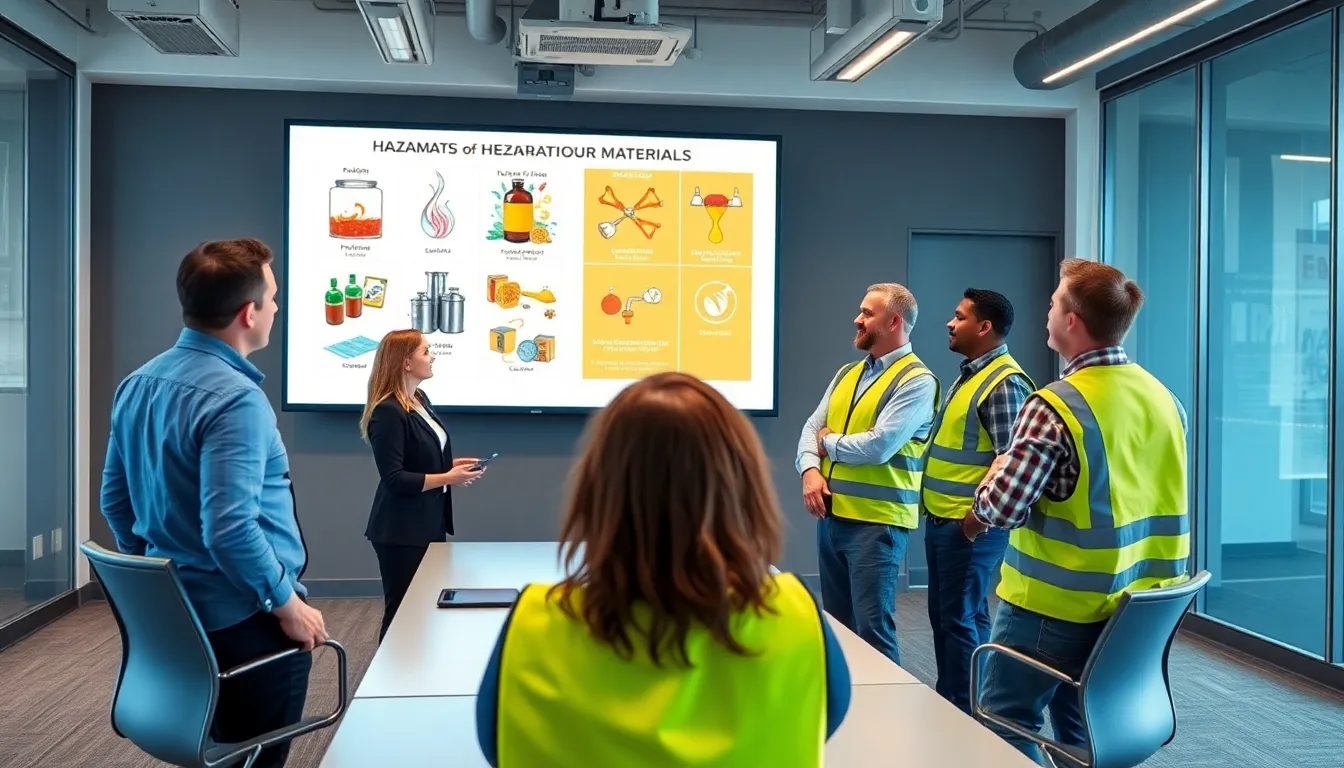Table of Contents
ToggleWhen it comes to transporting hazardous materials, a sprinkle of knowledge can go a long way, like being armed with an umbrella on a rainy day. You wouldn’t want to be caught in a storm without it, right? Knowing how to handle hazardous materials is crucial for safety, compliance, and ensuring that nobody makes headlines for all the wrong reasons. If you’ve ever wondered how to navigate the complex world of hazmat transportation with style and safety, you’re in the right place. Let’s jump into the essentials that every transport worker should know, from the basics to emergency procedures, all while keeping it clear and engaging.
Hazmat Familiarization And Safety In Transportation

Hazardous materials, often referred to as hazmat, include substances that can pose a risk to health, safety, or the environment during transportation. They are not just your everyday chemicals: they can have explosive, corrosive, flammable, or toxic properties. Understanding what makes these materials hazardous is the first step in ensuring safe transport.
Categories of Hazardous Materials
These materials can be broadly categorized into several groups:
- Explosives: Items that can explode or react dangerously under certain conditions.
- Gases: This includes flammable gases as well as those that can cause respiratory issues.
- Flammable Liquids: Think of fuels and various solvents that ignite easily.
- Corrosives: Substances that can damage living tissue or eat away at materials, such as acids.
- Toxic and Infectious Substances: Research chemicals or medical waste that can cause harm or disease.
Each category requires specific handling and transport precautions, which we’ll explore in more detail below.
Regulatory Framework for Hazmat Transportation
The transportation of hazardous materials is governed by a strict regulatory framework to ensure safety and compliance. Various agencies oversee these regulations, including the Department of Transportation (DOT) and the Environmental Protection Agency (EPA).
Training Requirements for Hazmat Workers
Hazmat workers need proper training to understand the risks associated with their materials. The DOT mandates that those involved in transporting these substances undertake specific training programs, covering everything from safe handling to emergency response tactics. Regular refreshers are also essential because regulations can evolve, and staying updated is paramount. Anyone handling hazmat must know the regulations applicable to their specific materials and gain certifications as needed. This training also enhances their awareness of potential hazards, making the job safer for everyone involved.
Proper Labeling and Marking of Hazmat
Labeling is not just a bureaucratic chore: it’s a critical part of hazmat safety. Proper identification of hazardous materials ensures that everyone in the supply chain understands what they’re dealing with.
Transport Vehicle Requirements for Hazmat
Vehicles transporting hazmat must meet specific standards. These include:
- Unique Signage: Clearly displaying the appropriate hazmat placards, indicating the type of material being transported.
- Containment Features: Trucks should have leak-proof containers or secondary containment to prevent spills during transit.
- Emergency Equipment: Vehicles should be equipped with the necessary gear to handle potential incidents, including fire extinguishers and spill kits.
Ensuring that vehicles are compliant not only helps protect the driver but also safeguards other road users.
Emergency Response Procedures for Hazmat Incidents
Even with adequate training and precautions, accidents can happen. It’s crucial to have a robust emergency response plan in place.
Best Practices for Enhancing Safety During Transportation
- Pre-Transport Planning: Ensure all necessary paperwork and emergency contacts are easily accessible.
- Real-Time Communication: Maintain communication between the transport team and the loading/unloading personnel. This includes updating on any changes or emergencies.
- Incident Response Training: Regularly conduct drills to prepare for potential incidents. Familiarity with safety protocols can save lives.
- Post-Incident Evaluation: After any incident, conduct a thorough investigation to learn and improve future practices. An after-action review can help identify gaps and reinforce better practices moving forward.




